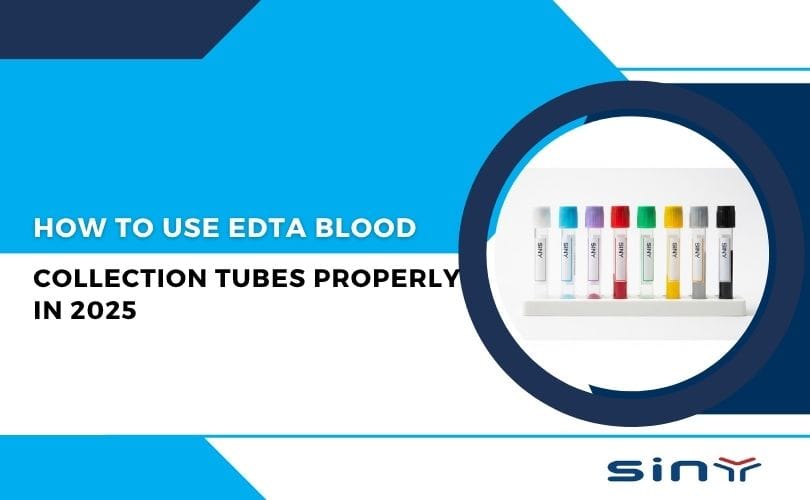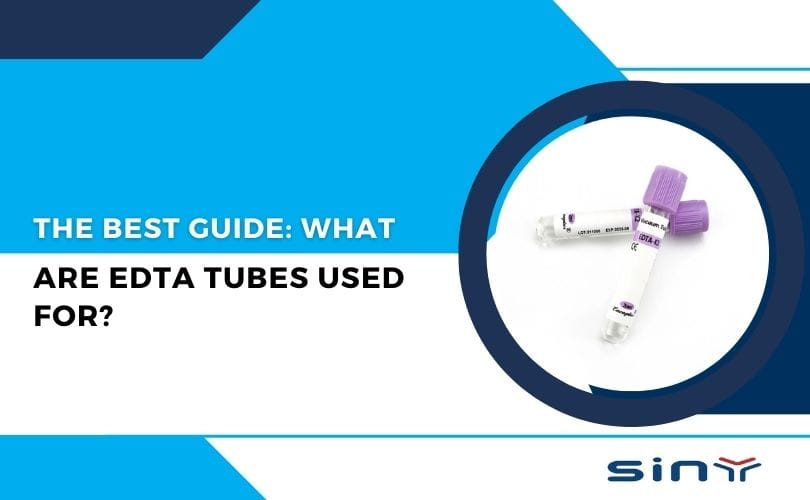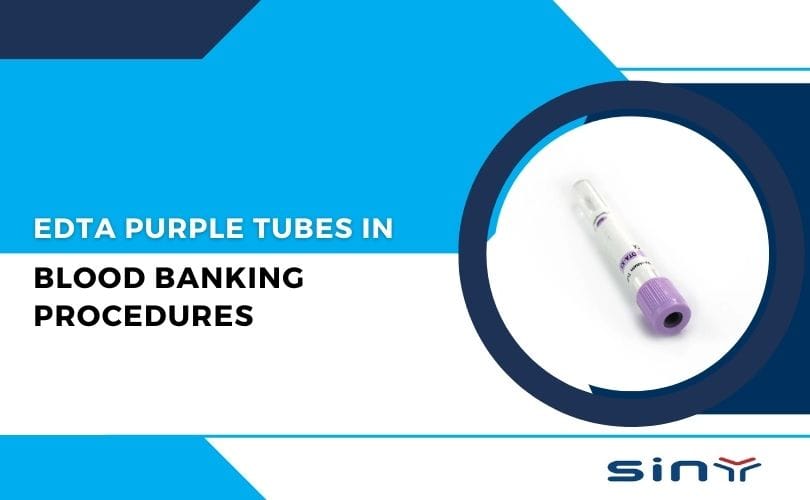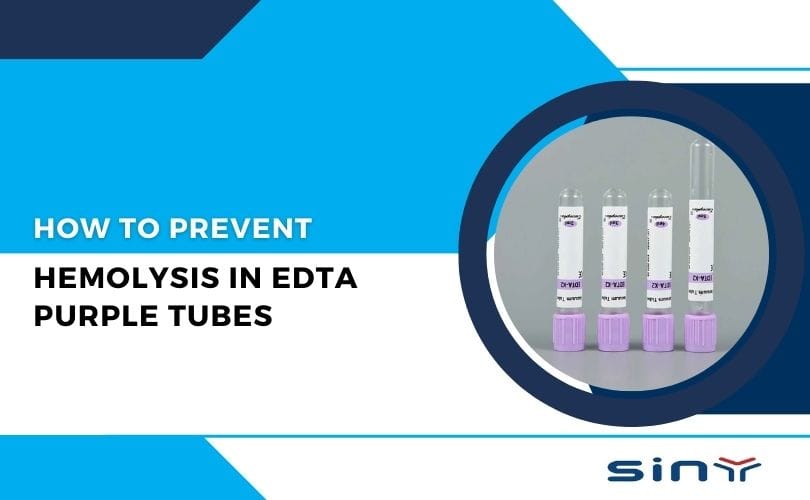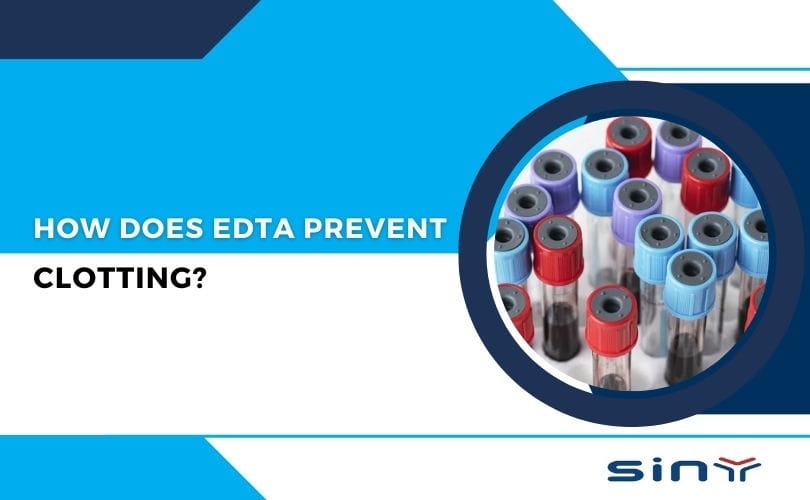EDTA Blood Collection Tubes are essential tools in modern clinical laboratories, enabling accurate hematology testing and reliable specimen handling. Proper use of these tubes minimizes pre-analytical errors, preserves sample integrity, and supports precise diagnostic results. This guide provides an in-depth, research-informed approach to selecting, handling, and utilizing EDTA tubes in 2025, with practical steps, quality control tips, and evidence-backed best practices.
What Are EDTA Blood Collection Tubes?
EDTA (Ethylenediaminetetraacetic acid) blood collection tubes are specialized containers designed to collect and preserve blood samples for analysis. These tubes are easily identifiable by their purple or lavender tops, which indicate the presence of EDTA as an anticoagulant.
Key Features:
- Anticoagulant Properties: EDTA binds to calcium ions in the blood, preventing coagulation and ensuring the sample remains in a liquid state.
- Versatility: Used for a wide range of tests, including complete blood counts (CBC), blood typing, and DNA analysis.
- Quality Standards: Manufactured under strict quality control guidelines to ensure consistency and reliability.
For more details on the types and uses of EDTA tubes, visit EDTA Tubes for Blood Collection.
Why Are EDTA Tubes Essential in 2025?
The role of EDTA tubes has become even more critical in 2025 due to advancements in diagnostic technologies and the increasing demand for precision medicine.
Applications in Modern Medicine:
- Hematology: Essential for CBC tests, which are fundamental in diagnosing conditions like anemia, infections, and blood disorders.
- Molecular Biology: Used in DNA and RNA extraction for genetic testing and research.
- Blood Banking: Ensures the integrity of blood samples for transfusion and storage.
To understand how EDTA works in these tubes, check out How Does EDTA in Purple Top Tubes Work?.
Composition and Design of EDTA Tubes
Let’s break down what makes these tubes so effective.
| Component | Description | Purpose |
|---|---|---|
| Tube Material | High-quality plastic or glass | Prevents contamination and breakage |
| Cap Color | Purple/Lavender | Indicates presence of EDTA |
| Additive | K2EDTA or K3EDTA | Anticoagulant to prevent clotting |
| Volume | 2ml–10ml (common) | Depends on testing requirement |
| Vacuum Pressure | Pre-set for correct blood draw | Ensures accurate volume collection |
To learn more about tube specifications, visit 10ml EDTA Purple Top Tubes: Uses & Benefits Guide.
Step-by-Step Guide to Using EDTA Blood Collection Tubes
Proper usage of EDTA tubes is crucial to avoid errors and ensure accurate test results. Here’s a detailed guide:
Preparation Before Collection
- Verify Patient Information: Ensure the patient’s details match the requisition form.
- Choose the Right Tube: Select the appropriate size (e.g., 2mL, 5mL, or 10mL) based on the test requirements.
- Inspect the Tube: Check for cracks, leaks, or expired labels.
Blood Collection Process
- Clean the Site: Use an alcohol swab to disinfect the venipuncture site.
- Insert the Needle: Draw blood into the tube using a sterile needle.
- Fill the Tube: Ensure the tube is filled to the indicated volume to maintain the correct blood-to-anticoagulant ratio.
Post-Collection Handling
- Mix Gently: Invert the tube 8-10 times to ensure proper mixing of blood and EDTA.
- Label the Tube: Attach a barcode or label with the patient’s information.
- Store Properly: Keep the tube at the recommended temperature until analysis.
For a comprehensive guide, visit How to Use an EDTA Tube.
Choosing the Right EDTA Tube for Your Laboratory
Tube material and cap color: Purple (lavender) tops typically indicate EDTA. Some tubes feature separation gel to aid plasma or serum separation after centrifugation, while others are plain whole-blood tubes for hematology work.
EDTA concentration and formulation: Most EDTA tubes use potassium EDTA (K2EDTA) or potassium EDTA (K3EDTA) formulations. The choice can influence anticoagulation efficiency and downstream testing compatibility.
Tube volume and fill accuracy: Consistent fill volumes are critical for reliable measurements, especially in automated analyzers. Under-filled tubes risk under-anticoagulation, while overfilled tubes may affect hematology results.
Gel technology: Gel separation tubes include a thixotropic gel barrier that facilitates plasma or serum separation. Gel-containing EDTA tubes are common for molecular studies and some chemical assays where clean separations improve workflow.
Best Practices for Pre-Analytical Handling
Draw order and specimen labeling: Follow institutional guidelines to minimize cross-contamination and ensure traceability. Label specimens at the point of collection with patient identifiers, time of draw, and clinician information.
Mixing and inversion: Immediately after collection, gently invert EDTA tubes a recommended number of times to mix anticoagulant with blood. Harsh agitation can cause hemolysis or mechanical cell damage; follow manufacturer guidance for the exact inversion count.
Storage temperature and transport: EDTA tubes are typically stored at room temperature or refrigerated, depending on the assay’s stability requirements. Avoid exposure to extreme temperatures, direct sunlight, or prolonged transport delays that may compromise cell integrity.
Section: Manufactured Quality and Tube Integrity
Tube wall integrity: Cracked or compromised tubes can alter sample volume and anticoagulant distribution, yielding erroneous results.
Cap seal and stopper quality: A secure cap reduces contamination risk and maintains internal pressure during transport.
Label and barcode durability: Clear, scannable labels prevent misidentification and ensure efficient workflow in automated systems.
Advancements in EDTA Tube Technology in 2025
The year 2025 has seen significant innovations in EDTA tube design and functionality:
- Enhanced Separation Gels: Improved gels ensure better separation of plasma and serum, reducing contamination risks.
- Smart Tubes: Integration of RFID tags for automated tracking and data management.
- Eco-Friendly Materials: Use of biodegradable plastics to reduce environmental impact.
Learn more about these advancements at EDTA Separation Gel Coagulation Blood Collection Tube.
EDTA Concentration and Hematology Performance
Complete blood count accuracy: EDTA preserves cellular morphology and prevents clotting, enabling precise white and red blood cell counts, hematocrit, and platelet measurements.
Platelet clumping prevention: Adequate mixing and timely processing reduce platelet clumping, which can distort platelet counts and indices.
Artifact reduction: Properly prepared EDTA samples minimize spatial and chemical artifacts that might interfere with hematology analyzers.
Why Choose Trusted EDTA Tube Manufacturers?
Not all EDTA tubes are created equal. Choosing high-quality, certified tubes from reputable sources ensures:
Accurate laboratory results
Reduced sample rejection
Extended shelf life
Compliance with international standards (ISO, CE, FDA)
Two leading providers include:
EDTATube.com — a global leader in blood collection innovation.
Siny Medical — known for precision-engineered vacuum systems and quality control.
For bulk purchases or inquiries, visit Contact Us.
Final Thoughts
In the fast-evolving world of clinical diagnostics, EDTA blood collection tubes remain indispensable. Their simple yet effective design ensures that every drop of blood you collect tells an accurate story. Whether you’re managing a large laboratory or conducting field tests, proper handling, storage, and selection of quality tubes define your accuracy and reliability.
For more in-depth resources, guides, and professional-grade EDTA tubes, explore EDTATube.com and their comprehensive product catalog.
If you’re curious about the manufacturing side of medical consumables, you can also visit Siny Medical’s Made-in-China Page.
FAQs
Q1: Why are EDTA tubes purple?
Because the purple (or lavender) color indicates the presence of the EDTA anticoagulant, distinguishing them from other tube types.
Q2: How long can EDTA blood samples be stored?
Generally, up to 48 hours at 2–8°C, depending on the test.
Q3: What is the difference between K2EDTA and K3EDTA?
K2EDTA is in powder form (less dilution), while K3EDTA is in liquid form and can slightly dilute samples.
Q4: Can EDTA tubes be used for coagulation tests?
No, EDTA interferes with calcium and is unsuitable for coagulation studies — use citrate tubes instead.
Q5: How do I know if an EDTA tube is expired?
Check the label — expired tubes may lose vacuum pressure or anticoagulant efficacy.

